Related Research Articles

Weaving is a method of textile production in which two distinct sets of yarns or threads are interlaced at right angles to form a fabric or cloth. Other methods are knitting, crocheting, felting, and braiding or plaiting. The longitudinal threads are called the warp and the lateral threads are the weft or filling. The method in which these threads are inter-woven affects the characteristics of the cloth. Cloth is usually woven on a loom, a device that holds the warp threads in place while filling threads are woven through them. A fabric band which meets this definition of cloth can also be made using other methods, including tablet weaving, back strap loom, or other techniques without looms.

The Fraser Valley is the region of the Fraser River basin in southwestern British Columbia downstream of the Fraser Canyon. The term is sometimes used outside British Columbia to refer to the entire basin including the Fraser Canyon and up from there to its source, but in general British Columbian usage of the term refers to the stretch of the river downstream from the town of Hope, and includes all of the Canadian portion of the Fraser Lowland and areas flanking it.

Chilliwack is the 7th largest city in British Columbia by metropolitan area with 101,512 people. Historically an agricultural community, most of its residents are now city-dwellers. Chilliwack is the seat of the Fraser Valley Regional District and its second largest city. This city is surrounded by mountains and recreational areas such as Cultus Lake and Chilliwack Lake Provincial Parks. It is located 102 kilometres southeast of Vancouver. There are many outdoor activities in the area, including hiking, horseback riding, archery, biking, camping, fishing, golf and paragliding.

The Stó:lō, alternately written as Sto:lo, Stó:lô, or Stó:lõ and historically, as Staulo or Stahlo, and historically known and commonly referred to in ethnographic literature as the Fraser River Indians or Lower Fraser Salish, are a group of First Nations peoples inhabiting the Fraser Valley and lower Fraser Canyon of British Columbia, Canada. Stó:lō is the Halqemeylem word for "river". The Stó:lō are the river people. The first historically documented reference to these people as "the Stó:lō" occurs in Catholic Oblate missionary records from the 1880s. Prior to this, references were primarily to individual tribal groups such as Matsqui, Ts’elxweyeqw, or Sumas.

Khadi IAST: Khādī) is a hand-woven natural fiber cloth originating from eastern regions of the Indian subcontinent, mainly Eastern India, Northeastern India and Bangladesh, but are now broadly used in Pakistan and throughout India. This fabric is made mainly of cotton.

Fort Langley National Historic Site, commonly shortened to Fort Langley, is a former trading post of the Hudson's Bay Company, now located in the community of Fort Langley opposite McMillan Island on the traditional, ancestral, and unceded land of the Kwantlen, Katzie, and Matsqui First Nations. Commonly referred to as "the birthplace of British Columbia", it is designated a National Historic Site and is administered by Parks Canada.
Maya textiles are the clothing and other textile arts of the Maya peoples, indigenous peoples of the Yucatán Peninsula in Mexico, Guatemala, Honduras, El Salvador and Belize. Women have traditionally created textiles in Maya society, and textiles were a significant form of ancient Maya art and religious beliefs. They were considered a prestige good that would distinguish the commoners from the elite. According to Brumfiel, some of the earliest weaving found in Mesoamerica can date back to around 1000-800 B.C.E.
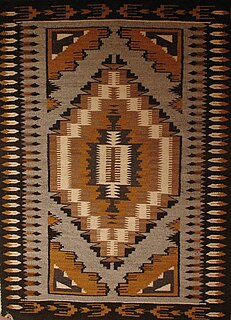
Navajo rugs and blankets are textiles produced by Navajo people of the Four Corners area of the United States. Navajo textiles are highly regarded and have been sought after as trade items for over 150 years. Commercial production of handwoven blankets and rugs has been an important element of the Navajo economy. As one expert expresses it, "Classic Navajo serapes at their finest equal the delicacy and sophistication of any pre-mechanical loom-woven textile in the world."

The Coast Salish is a group of ethnically and linguistically related Indigenous peoples of the Pacific Northwest Coast, living in British Columbia, Canada and the U.S. states of Washington and Oregon. They speak one of the Coast Salish languages. Nuxalk nation are usually included in the group, although their language is more closely related to Interior Salish languages.
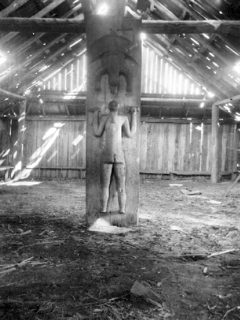
Coast Salish art is an art unique to the Pacific Northwest Coast among the Coast Salish peoples. Coast Salish are peoples from the Pacific Northwest Coast made up of many different languages and cultural characteristics. Coast Salish territory covers the coast of British Columbia and Washington state. Within traditional Coast Salish art there are two major forms; the flat design and carving, and basketry and weaving. In historical times these were delineated among male and female roles in the community with men made "figurative pieces, such as sculptures and paintings that depicts crest, shamanic beings, and spirits, whereas women produced baskets and textiles, most often decorated with abstract designs."
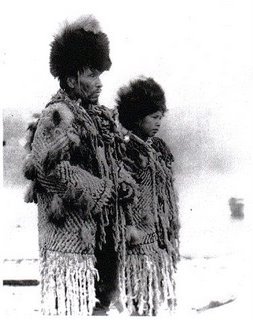
Salish are skilled weavers and knitters of the Pacific Northwest. They are most noted for their beautiful twill blankets many of which are very old. The adoption of new fabrics, dyes, and weaving techniques allow us to study a wide variety of Salish weavings today.

Cowichan knitting is a form of knitting characteristic of the Cowichan people of southeastern Vancouver Island, British Columbia. The distinctively patterned, heavy-knit Cowichan sweaters, popular among British Columbians and tourists, are produced using this method. Cowichan knitting is an acculturated art form, a combination of European textile techniques and Salish spinning and weaving methods. From this union, new tools, techniques and designs developed over the years.

The Salish peoples are an ethno-linguistic group of the Pacific Northwest, identified by their use of the Salish languages which diversified out of Proto-Salish between 3,000 and 6,000 years ago.
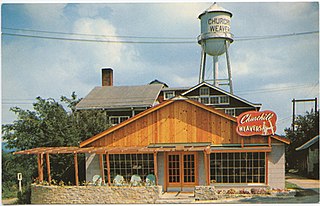
Churchill Weavers was a handweaving company that operated from 1922 to 2007 in Berea, Kentucky, an area of Appalachia long associated with handcrafts.
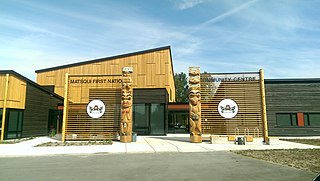
The Matsqui people are a Sto:lo Aboriginal group located in the Central Fraser Valley region of British Columbia, Canada. Their band government is the Matsqui First Nation, a member of the Sto:lo Nation tribal council. The core traditional territory of the Matsqui stretches along the Fraser River from Crescent Island to Sumas Mountain, and southward beyond the Canada-United States border. Today the band administers four reserves and has a population of 225.

The woollen industry in Wales was at times the country's most important industry, though it often struggled to compete with the better-funded woollen mills in the north of England, and almost disappeared during the 20th century. There is continued demand for quality Welsh woollen products.
Debra Sparrow, or θəliχʷəlʷət (Thelliawhatlwit), is a Musqueam weaver, artist and knowledge keeper. She is self-taught in Salish design, weaving, and jewellery making.
Eugene Weavers' Guild is a non-profit organization of weavers, spinners, and other fiber artists in Eugene, Oregon, in the U.S. It was founded in 1946 and has been meeting monthly for more than seventy years. As of 2016, the Guild included 85 members, ranging in skill from hobbyist to professional weavers, from Eugene, Springfield, and rural communities of surrounding Lane County, Oregon, USA. The Guild sponsors workshops, a lending library, skill demonstrations in a variety fiber arts, equipment sharing, and events to raise funds for local charities.
Josephine Mulvany and Sybil May Mulvany were New Zealand weavers. They established the first commercial hand weaving studio in New Zealand. A large quantity of their work is held at Te Papa, in Wellington and the Auckland War Memorial Museum.
In Canadian folklore, Seelkee is a lake monster reported to have lived in the swamps of what is now Chilliwack, in British Columbia, Canada. Seelkee has been allegedly seen by the Stó:lō, First Nations, people for hundreds of years. The most common description of Seelkee is a 10 to 15-foot-long sea serpent like beast with the head of a horse.
References
- ↑ Wells, Oliver. Salish Weaving: Primitive and Modern. Sardis: Oliver N. Wells, 1969.
- 1 2 3 4 Gustafson, Paula. Salish Weaving. Vancouver: Douglas & Washington, 1980.
- ↑ Oliver Wells, “Return of the Salish Loom,” The Beaver, Spring 1966.
- ↑ Clark, Hilary. “Salish: The Art that Almost Died,” Canadian Homes Magazine, March 20, 1971.
- ↑ Philip Hersee, “The Almost-Lost Art of Indian Weaving,” Western Homes and Living/Vancouver Life, February 1969.
- ↑ Oliver Wells, “Salish Weaving”, Beautiful British Columbia Magazine , Summer 1969, 35-39
- ↑ Marie Weeden Fonds. Chilliwack Archives. Chilliwack, British Columbia.
- ↑ Rena Point Bolton and Richard Daly, Xwelíqwiya: The life of a Stó:lō Matriarch ( Edmonton: AU Press, 2013), 133